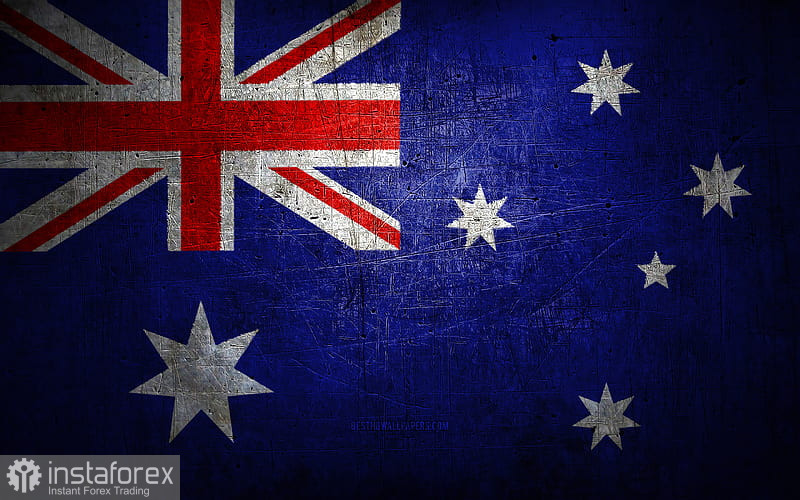The Australian dollar paired with the US currency shows quite strong volatility, but at the same time – contradictory dynamics. At the end of last week, the AUD/USD pair was growing steadily: due to the momentum of Friday, the aussie tested the 64th figure on Monday. But then there was a sharp reversal – as part of yesterday's trading, the pair recorded a low at 0.6275. But again, the bears could not develop their success and gain a foothold within the 62nd price level. As a result, a price range of 0.6250-0.6400 was formed, within which the pair has been trading for the past week.
AUD/USD traders are waiting for an informational driver that would help them leave the aforementioned price level. It could be tomorrow's release – during the Asian session on Wednesday, Australia will publish key data on the growth of inflation in the country. If the report comes out in the green zone, the aussie will receive substantial, but probably short-term support.

Let me remind you that the main indicators in the field of the Australian labor market were published last week. And although the report was far from flawless, the market interpreted it in favor of the aussie. Traders focused their attention on the fact that unemployment remained at 3.5%, that is, in the area of 50-year lows. The share of the economically active population also remained at the August level – 66.6%. While the indicator of the increase in the number of employed was disappointing: the indicator came out at around 900. Despite the fact that experts expected to see a 25,000 increase. But here it is necessary to clarify one point. The structure of this component indicates that the level of part-time employment (-12,400) significantly decreased in September. While the number of full-time employees increased by 13,300. It is known that full-time positions imply a higher level of wages and a higher level of social security, compared with temporary part-time jobs. Therefore, AUD/USD traders for the most part positively perceived the "Australian Nonfarm": the aussie significantly strengthened its position.
The inflation report for September, which will be published tomorrow, can consolidate this success or neutralize it.
It should be recalled here that at the last meeting, the Reserve Bank of Australia raised the interest rate by only 25 points, although most experts predicted a 50-point hike. The central bank maintained a hawkish course, but at the same time moderated the pace of monetary policy tightening. The minutes of the October meeting published last week made it clear that the RBA will increase the rate at a moderate pace in the coming months. This is eloquently evidenced by one of the wordings of the minutes: "the current situation requires a further increase in interest rates in the coming period." At the same time, RBA members were concerned about the fact that inflation in Australia is at too high a level, and by the end of the year it could rise to 7.8%.
According to preliminary forecasts, the consumer price index in the third quarter should show an increase of 7%. If we talk about the monthly calculation, then in September the CPI may show similar dynamics (forecast – 7.2%). Obviously, if the report is released in the green zone, the Australian dollar will receive support throughout the market – paired with the greenback, it will be able to test the 64th figure again.
And yet, to date, neither bulls nor bears of the pair have fundamental arguments for turning the situation in their favor. But if we consider a broader (medium-term) time period, then, in my opinion, short positions are in priority here. Take a look at the weekly chart: after falling to the 61st figure in early October, the pair tried to develop a corrective movement. But as soon as the aussie approached the 64th figure, bears began to take the initiative, putting pressure on the pair. The divergence of the monetary policy rates of the two central banks – the Federal Reserve and the RBA – is still on the agenda, so it is advisable to use the situational strengthening of the Australian currency as an excuse to go into short positions.
From a technical point of view, the situation is uncertain. The AUD/USD pair on the daily chart is located on the middle line of the Bollinger Bands indicator, under the Kumo cloud, but between the Tenkan-sen and Kijun-sen lines. In other words, trend indicators do not signal any priority: the pair is at a crossroads. If tomorrow's inflation report surprises traders with its "green color", the aussie may strengthen its position to 0.6460 (Kijun-sen line on D1). However, it is unlikely to settle above this target. If the report turns out to be disappointing, then the pair is likely to continue trading in the range of 0.6290 (Tenkan-sen line) – 0.6360 (average Bollinger Bands line). Therefore, it is advisable to take a wait-and-see position on the AUD/USD pair.





















